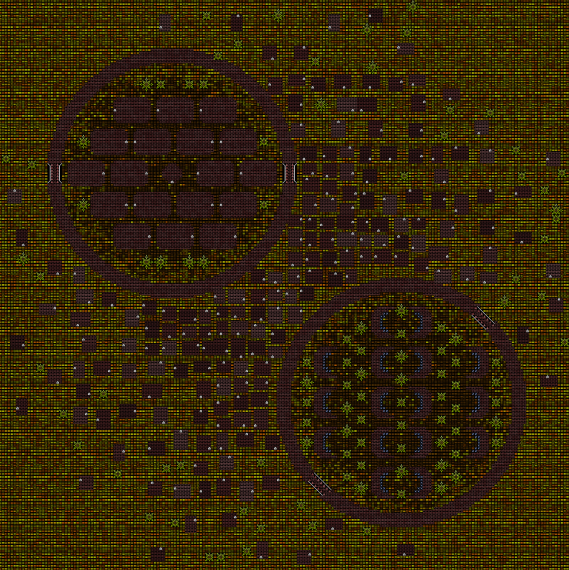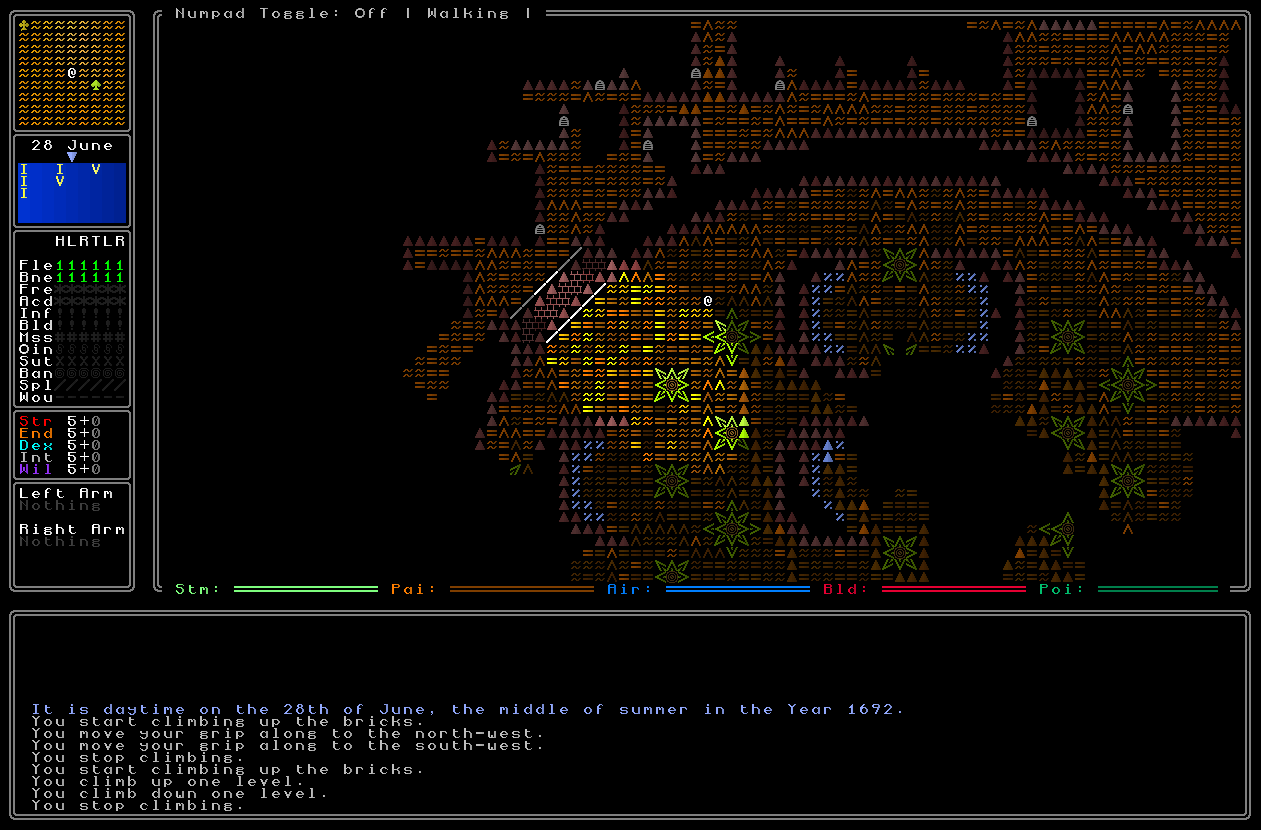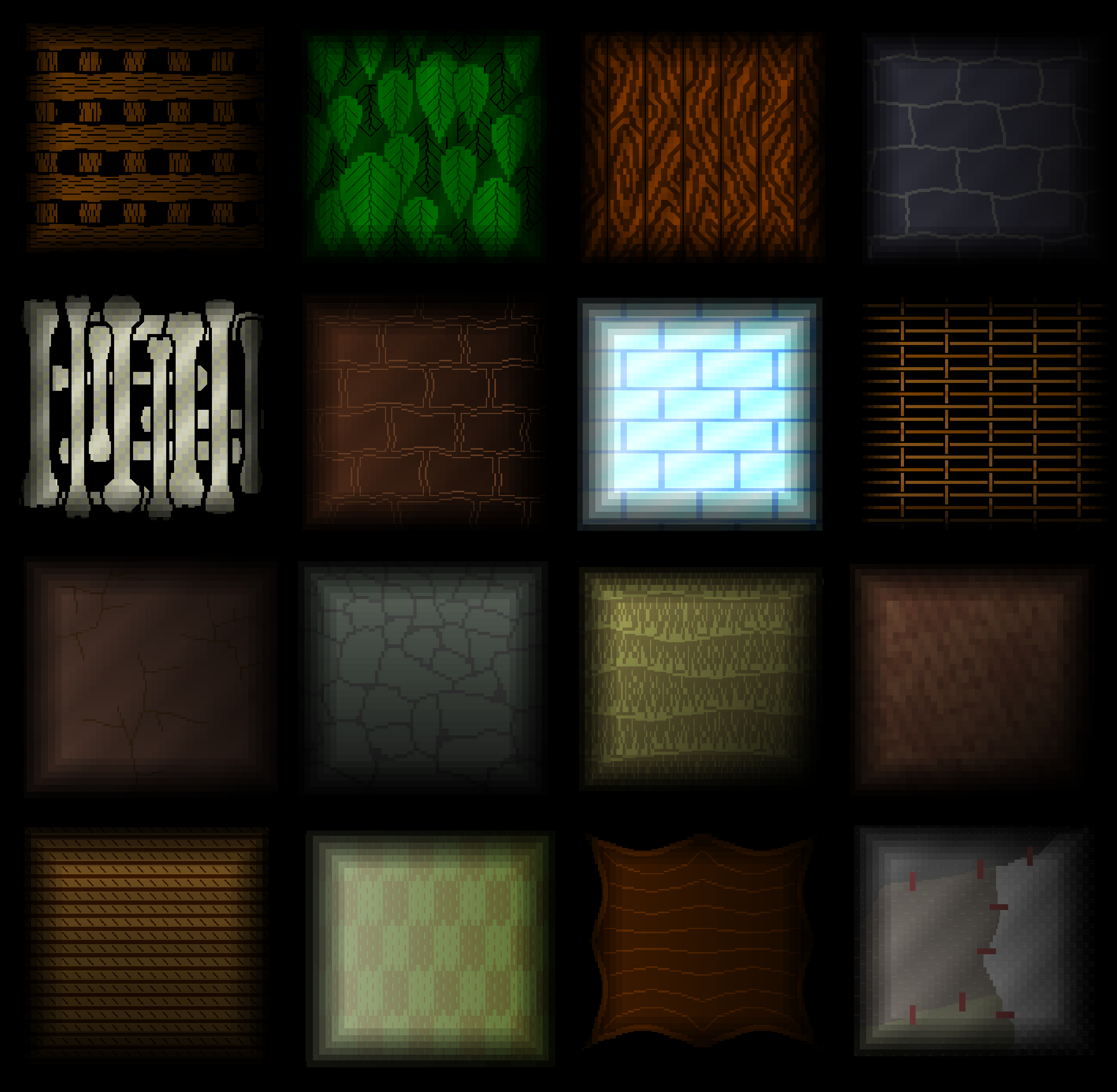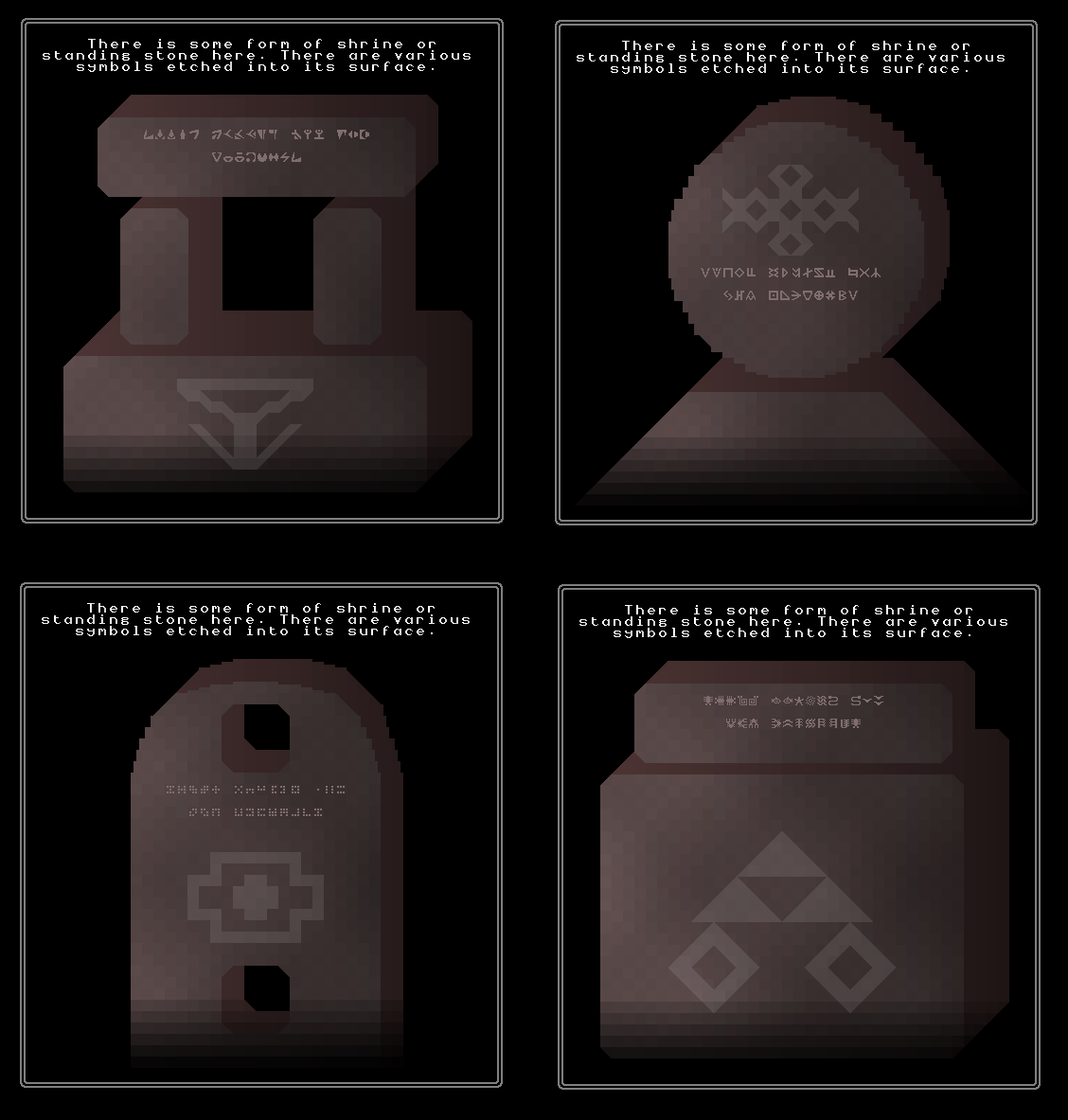This is the first development update in a couple of weeks. I’m still primarily working on my doctoral thesis in the hopes of finishing before the end of September, at which point I’ll be starting the full-time development year. Nevertheless, I’ve managed to snatch a little bit of time here and there to code and keep things ticking over.
Fortresses
I’ve done a few more fortress archetypes. As mentioned before, there are twelve “shapes” fortresses can generate in total; each civilization chooses one, and there can never be more than five nomadic civilizations, so it’ll be a long while until you see each archetype (not to mention, obviously, that each instance of each archetype will generate differently). I’ve thrown together the “Pentagon” and the “Double Fort” algorithms, and here are a bunch of screenshots. Fortresses are really interesting to walk around – they definitely evoke a very different feel to towns or cities or settlements. One thing I’ve found to be a very good idea is to really emphasize difference in procedural generation – sure, in the real world, a “castle” and a “fortress” may be very similar, but by placing one at the core of cities and giving the other to nomads, I’ve emphasized the differences in each one to create two totally different kinds of structure. Even though they lack NPCs yet, walking around the four different types of population centre (cities, towns, settlements, fortresses) all feel totally, totally different (which was exactly the goal) and I can’t wait to see what everyone else thinks once this release is out. Some fortresses are more or less militarized than others; some have larger or small markets, or housing, or defenses; some are more open, some are more closed and more challenging to navigate. There’s a great amount of variety, and they all also handle rivers in different ways, leading to some really interesting maps (which have been challenging to make ensure walkable generation on)…
Hunter-Gatherer Buildings
I’ve thrown together the generators for the textures of all the different building materiasl hunter-gatherer civilizations might use. Whereas feudal civilizations use variations of bricks and nomadic civilizations sometimes uses bricks, or stone, or drystone walls, hunter-gatherers are forced to be a little more resourceful. There are currently sixteen different materials, each civilization will choose a different one (a couple are tied to particular climates) and they won’t repeat, so you’ll have a wide variation every game. Here’s an example of the outcomes of each of the generators for the different materials. Going left-to-right and top-to-bottom, these are “logs”, “leaves”, “wood”, “stone”, “bones”, “mud bricks”, “snow bricks”, “interwoven sticks”, “mud”, “drystone”, “thatch”, “wattle and daub”, “rope”, “bamboo”, “leather”, “fur”:
The materials have no particular gameplay difference, but they do lend a nice variety to the hunter-gatherers, especially as the way they are displayed in-game varies according to the colour of each texture. HG civilizations are now looking rather more complete than they were before, and the other reason for this is the introduction of standing stones.
Standing Stones
Different religions worship in different ways; some have big idols, some might have small totems in the houses of worshipers, and so forth. Some hunter-gatherer civilizations have standing stones in the middle of their settlements as the focal points for worship. Each of these is a different shape, contains a symbol of the appropriate religion, and… some other text, in an ancient language. In future versions this text will be one of many clues around the world to help you find your way through the world’s mysteries, and will be one of several reasons you might consider visiting a hunter-gatherer settlement you pass on your way to parts unknown.
NEXT UP: The next three entries will probably be the other games criticism entries I discussed before, then we’ll have a roundup of some more code at the end of August/start of September. By then I should have more of the fortress archetypes done (maybe all of them?) and maybe some more city districts too – military districts might be next on my list, though I think I also need to make some changes to market districts; playtesting them by myself suggests that they might need to be a little more contained and a little less open to make them more enjoyable and more understandable to navigate. The plan thus remains: I’m working hard to finish my thesis before I move house in late September, and then to start the full-time year of development in October, with the intention of releasing 0.6 – admittedly the biggest URR update ever, since it is generating every town, city, fortress and settlement – within November. Until next time you can keep up to date on my devblog, Facebook page, or Twitter feed. The devblog is updated weekly on Saturdays (or sometimes Sundays), Facebook a few times a week, and the Twitter roughly daily. Stay tuned...





I like! Though I have to say, those fortresses don't necessarily invoke 'nomad.' They're a bit too organized I think.
Why can't nomads be organized? Actually it seems somewhat likely for successful nomads. It would help with defense and breaking down camp to move quickly when needed. Just saying.
A little less perfect order might be nice but I don't think nomads would be particularly chaotic.
Of course but they're nomads, constantly on the move to follow herds of animals. They don't have time to waste to make their camps perfectly organized and they don't have much reason to either.
I think he's assuming the fortresses are built by semi-nomadic peoples who regularly move between two to four established sites based on the season. When there's not enough sustenance in the area to support the nomads, the camp/fortress is left empty, though it might provide shelter for travelers and brigands - people who aren't living off the local resources.
Interesting discussion! I wanted to play with some other desert civilizations and castles as well as nomads - the URR nomads are definitely thematically a mix of a whole bunch of different things. Some fortresses are more militaristic, some more or less organized, some more "open" in layout terms, some more closed. At the edges of deserts there are going to be small camps which are where you can join a caravan route from, but I wanted the "cores" of the nomads to be a little more stable, actually, and a little more fortified. Stalker, re: your second comment, I have in mind here much more like traders/caravan peoples than "nomads" in the hunter-gatherer sense; my assumption is that much of their food is imported and/or traded around. The fortresses are more like beacons on the trade routes where some people have decided to put down roots and defend themselves rather than staying on the core caravan paths. They're about the size of towns, larger than hunter-gatherer settlements, but only a tiny fraction of the size of an actual city.